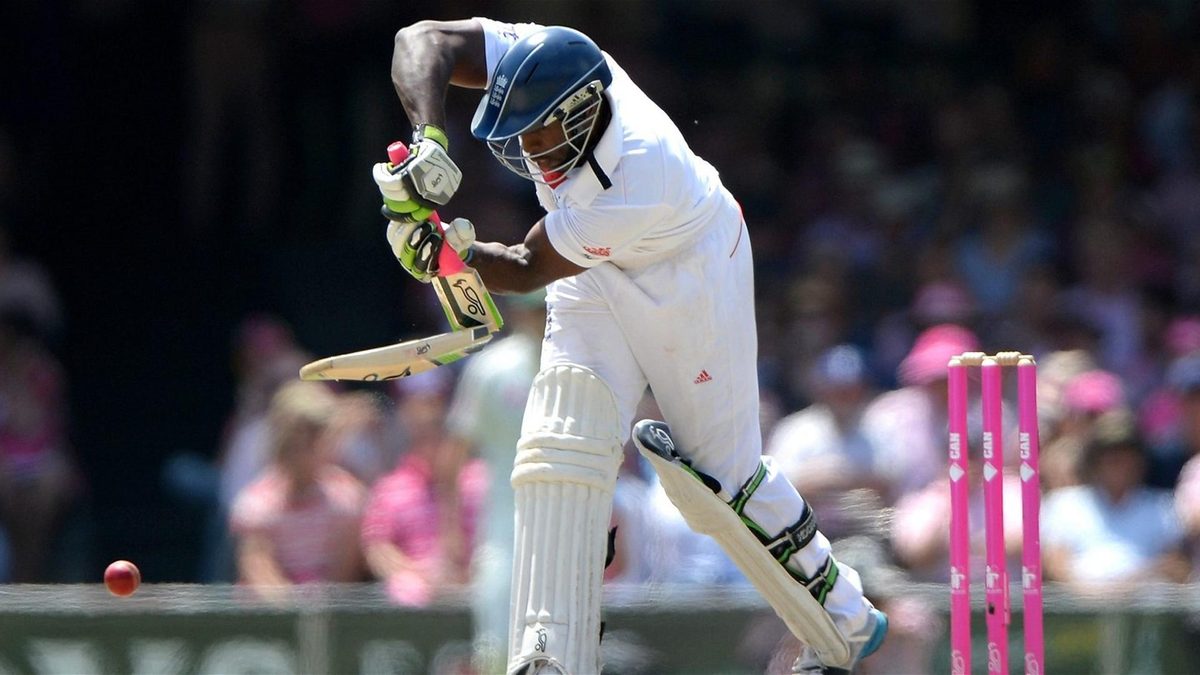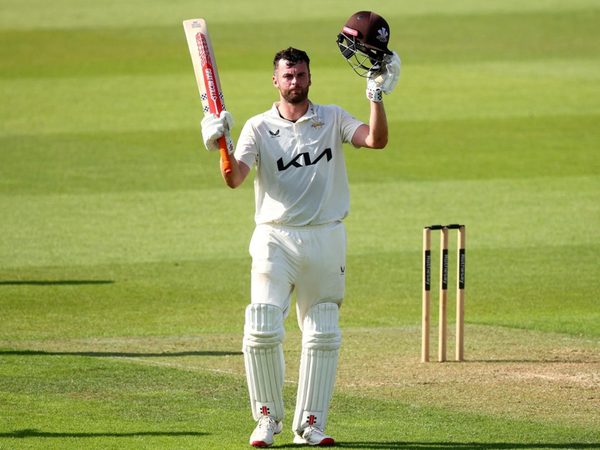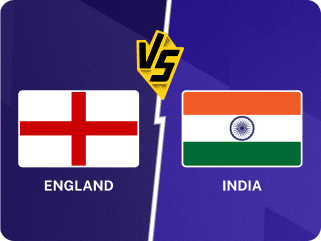
Ben Gardner ranks all 18 openers England have tried since Andrew Strauss retired.
It’s a decade to the week since Andrew Strauss retired from cricket, with ‘Textgate’ still bubbling away and a 2-0 defeat to South Africa having seen England surrender their No.1 Test ranking.
Since then England have tried and tried to replace him atop the order. Eighteen men, aside from Alastair Cook who stayed in the role for six years after Strauss’ retirement, have been trialled (excluding pinch-hitters Ben Stokes and Jos Buttler and nightwatchman Jack Leach). Only two have made it to 20 Tests. Only one averages more than 32, and the two men currently in the role are bottom and second-bottom in the averages, with a cut-off of 15 innings. England now sit fourth in the ICC Test rankings. It’s not been great. And the overwhelming sense of underperformance can make it hard to separate the not that good from the really not great. But that doesn’t mean we can’t try.
Without further ado, then, here’s every England Test opener since Strauss, ranked and dissected.
Stats in bold only include innings opening the batting since Strauss retired
The very short lived tier
18. Jason Roy
4 Tests, 62 runs at 8.85, HS: 28
Bottom of the heap we have J-Roy, the white-ball hero with the swagger to make Australia quiver. If he came off just once or twice, the experiment would be worth it, was the thinking. He did not come off once or twice. His case isn’t helped that his one good innings, against Ireland, came with Jack Leach promoted to open, and Roy pushed down to No.3. At least he’s got some IPL cash and a World Cup winners medal to ease the pain. He also out-scored his opposite number David Warner across the 2019 Ashes.
17. Moeen Ali
3 Tests, 84 runs at 14.00, HS: 35
Moeen Ali only just counts as a first-choice opener, promoted to face the new ball in the UAE so England could fit all the bowlers they wanted in, but also assured that if he succeeded, the role would be his. In a way, it was an inverted Bazball type move, with the new ball supposed to be the easiest run-scoring period in the region. Moeen promptly blocked the shit out of it, striking at 35.44, and was back down at No.8 for England’s tour of South Africa. The experiment at least meant that, by the end of 2016, he had batted in every position from Nos.1-9 in Test cricket, giving an easy intro to every ‘Moeen has been mismanaged’ piece that needed to be written.
16. Jonathan Trott
3 Tests, 72 runs at 12.00, HS: 59
The best thing about Jonathan Trott’s Test opening career is that it happened at all, a triumph of will and a more worthy end to his England career than being simply another Ashes casualty, bounced and heckled out of Australia by Mitchell Johnson and David Warner respectively. He managed one half-century as England drew in the West Indies.
15. Ben Duckett
2 Tests, 92 runs at 23.00, HS: 56
Ben Duckett only got two Tests at the top of the order, and in the last of those he made 60 in a century opening stand to put England in a position from which they really shouldn’t have lost. Only, they did, and everyone promptly forgot as Haseeb Hameed arrived. Duckett was pushed down, and R Ashwin worked him over. There’s evidence recently to suggest he deserves another go, but given the England performances so far, he can’t quite creep out of the bottom five.
The struggle tier
14. Zak Crawley
19 Tests, 817 runs at 22.69, 1 100, HS: 121
Bottom of the second-from-bottom tier, and hence fifth overall, is Zak Crawley. That 267 came at No.3, so we can happily discount it, and beyond that he’s yet to pass fifty at home, with only a smattering of scores on the road. We’ve heard all about that potential, and maybe that ground-out 38 at Old Trafford really is the start of something, but for now, this is where Crawley is at.
13. Adam Lyth
7 Tests, 265 runs at 20.38, 1 100, HS: 107
Like Sam Robson a year hence, Adam Lyth managed a hundred in his second Test in a game England lost, and then struggled in the five-match series that followed. Lyth really struggled in that 3-2 Ashes win, averaging 12.77 with a high score of 37, and hasn’t been seen for England since, though he has made his case at times, and built a record as one of England’s most fearsome white-ball batters never to get a chance at the top level.
12. Alex Lees
9 Tests, 401 runs at 23.58, HS: 67
England’s other incumbent, and another with a record inferior to most of the others who have been tried. There’s something of a feedback effect at play here, with England extending more and more credit to players further and further down the pecking order as those in charge realise just how difficult the job of opening the batting in Test cricket actually is. Again, the caveat is there that he might improve and that there have been signs that he can do so. But also, he averages 23.58.
11. Keaton Jennings
17 Tests, 755 runs at 25.16, 2 100s, HS: 146*
England’s Asia specialist. Keaton Jennings made a hundred on debut in India, and another century, with his place on the line, in Sri Lanka. But at home, in 10 Tests, he averages 17.72. An excellent summer, a triple century being the highlight, with a tour of Pakistan on the horizon, has burnished his hopes of a recall.
10. Haseeb Hameed
9 Tests, 371 runs at 23.18, HS: 82
Four centuries in his first county summer – including two in the Roses game, a Lancashire first – and then that golden debut, serene in the first innings and sublime in the second. He was arguably not at fault for any of his dismissals following his first, attempting to up the rate and run out before copping a shooter and a lifter. The last of those broke his thumb, which ruled him out of the tour, but even demoted to No.8 he still managed an unbeaten 59. Then the floor fell out, Hameed could barely buy a run across two years.
In 2021, with England devoid of options and Hameed showing the first flickers of form, he was recalled, and again impressed at first, with two scores in the 60s against India. But he struggled with his tempo and to combat Australia’s pace and was one of the many axed in the Ashes aftermath. He has since quietly put together arguably his most compelling county campaign, with an increased strike-rate allied to impressive consistency. Perhaps the story isn’t yet finished.
9. Mark Stoneman
11 Tests, 526 runs at 27.68, HS: 60
A curious case. Five fifties in 11 Tests, but a high score of 60. Mark Stoneman showed he could blunt the new ball, and held his own in Australia, but couldn’t make a statement score. He was dropped, perhaps harshly, and then discovered that his soon-to-be-born first child had a serious heart condition, understandably distracting him from knuckling down to win a recall.
8. Alex Hales
11 Tests, 573 runs at 27.28, HS: 94
Before Jason Roy there was Alex Hales, a white-ball blaster given a go to get England off to a flier against the new ball. He actually did OK, albeit not in the way England expected, making five fifties in 11 Tests but also only scoring at a strike-rate of 43.84. He also wasn’t really dropped, instead sitting out of England’s tour of Bangladesh amid security concerns, and then not recalled thereafter. Soon enough, he had signed a white-ball only contract at Notts, one of the first of its kind.
The deserved more time tier
7. Joe Denly
3 Tests, 188 runs at 31.33, HS: 94
OK, so Joe Denly only actually got three Tests as an opener, debuting there in the West Indies and then supplanting Jason Roy as his Ashes debacle deepened. But in that short time he made a half-century to almost keep the urn alive going into The Oval Test, and then a 94 at the People’s Ground to level the series, and he was only moved aside, down to No.3, rather than out.
6. Sam Robson
7 Tests, 336 runs at 30.54, 1 100, HS: 127
An opener averaging 30! A hundred in his second Test! Australia-born! Truly, England didn’t realise how good they had it, reasoning that there must be someone better out there, someone capable of averaging 35 at least. Spoiler: there wasn’t.
Robson was also the victim of the schedule, with a lengthy gap between the end of India’s visit in 2014 and England’s West Indies tour enough to forget the best of his work.
5. Dom Sibley
22 Tests, 1,042 runs at 28.94, 2 100s, HS: 133*
Dom Sibley won a call-up due to sheer weight of county runs, and then batted slowly but also Did A Job through his first year in the side, with two centuries suggesting a player who could see off the new ball but also go big. Then came a horror tour of India which he ended, like everyone else, out of form, something which persisted through to the summer. Even given that, he made a match-saving half-century against New Zealand two games before he was dropped, and has been impressive on his return to county cricket, with a slightly remodelled technique. Could come again.
4. Michael Carberry
5 Tests, 281 runs at 28.10, HS: 60
Five Tests against Mitchell Johnson and Co. A total of 281 runs, the second most-runs by an England batter in the series. One of the great cricket photos, demonstrating the brutality of that attack. And nothing thereafter, with Ashley Giles duly told where he could shove it.
3. Nick Compton
10 Tests, 498 runs at 31.12, 2 100s, HS: 117
The first post-Strauss opener and also, in hindsight, one of the best. ‘The grandson of’ played a key role in England’s 2-1 win in India, laying the platform time and again in one of the standout results in any Test series by any team this century, and then made two consecutive hundreds in New Zealand as England escaped with a 0-0 draw. He was dropped after a slow start to the 2013 summer; the story was similar on recall in 2016, but all but one of those knocks came at No.3 and so can be discounted.
2. Rory Burns
32 Tests, 1,789 runs at 30.32, 3 100s, HS: 133
A former future England captain, with THREE Test hundreds to his name and grit to spare. Rory Burns was often unfairly tagged as a shotless technique-freak, when he could stroke it around once he got in, and set up in a reasonably traditional manner after the headtilt. And up until he got Mitchell Starced round his legs, he looked the likeliest to put together a lengthy Test career.
The Joe Root tier
1. Joe Root
6 Tests, 417 runs at 41.70, 1 100, HS: 180
Joe Root is the best opener England have had since Andrew Strauss. He’s also their best No.3 since Jonathan Trott, their best No.4 since KP and their best No.5 since Ian Bell. If you gave him the gloves, he’d probably be the best keeper since Matt Prior. If he had to focus on his off-spin, maybe he’d be the best at that since Graeme Swann. And given he’s bowled the odd bouncer in his time, there’s potential as a seamer too. His 180 against Australia is the highest score by an English non-Cook opener since Strauss, and even when promoted in a pinch in 2016 against India at Mohali, with the ball turning significantly and England’s pre-tour optimism just starting to ebb, he still managed 76. He can’t do everything. But imagine if he could.







